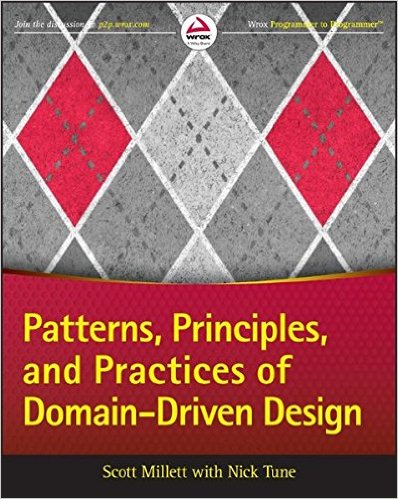A Comprehensive Exploration of Domain-Driven Design
Introduction
Domain-Driven Design (DDD) is a software design approach that prioritizes the core domain of a software application. By focusing on the domain model, DDD aims to create software that is not only technically sound but also aligns closely with the business needs. This white paper will delve into the key principles, patterns, and practices of DDD, drawing insights from the seminal work "Patterns, Principles, and Practices of Domain-Driven Design" by Scott Millet.
Core Principles of DDD
- Domain-Centric Design:
- Domain Model: The heart of DDD, a model that represents the core business concepts and rules.
- Ubiquitous Language: A shared language between technical and domain experts, ensuring clear communication.
- Strategic Design:
- Bounded Context: Isolating parts of the domain with distinct models and languages.
- Context Mapping: Defining relationships between bounded contexts, including shared kernel, customer/supplier, and anticorruption layer.
- Tactical Design:
- Building Blocks: Using building blocks like entities, value objects, services, repositories, and aggregates to construct the domain model.
- Patterns: Applying patterns like Domain Events, Event Sourcing, and CQRS to address specific design challenges.
Strategic Design Patterns
- Bounded Context:
- Isolating parts of the domain with distinct models and languages.
- Example: In an e-commerce system, the "Order Processing" and "Customer Service" contexts might have different perspectives on "Order."
- Core Domain:
- Identifying the most critical part of the domain, where significant business value lies.
- Example: In a financial system, the "Trade Execution" module might be the core domain.
- Subdomain:
- Dividing the domain into smaller, more manageable subdomains.
- Example: In a healthcare system, "Patient Management" and "Billing" could be subdomains.
- Shared Kernel:
- A shared model and language between multiple bounded contexts.
- Example: A "Product" entity might be shared between "Catalog" and "Order Processing" contexts.
- Customer/Supplier:
- A relationship between two bounded contexts where one provides services to the other.
- Example: The "Order Processing" context might be a customer of the "Inventory" context.
- Anticorruption Layer:
- Isolating a legacy system or external system to protect the core domain.
- Example: A layer to translate data between a legacy database and the domain model.
Tactical Design Patterns
- Entity:
- Objects with a unique identity that persists over time.
- Example: A "Customer" entity with a unique ID and attributes like name and address.
- Value Object:
- Objects that represent a concept without a unique identity.
- Example: A "Money" value object with attributes like amount and currency.
- Aggregate:
- A cluster of associated objects, treated as a single unit.
- Example: An "Order" aggregate with "Order Items" and "Shipping Address."
- Domain Service:
- Stateless services that encapsulate complex domain logic.
- Example: A "PaymentService" to process payments.
- Repository:
- A mechanism for storing and retrieving domain objects.
- Example: A "CustomerRepository" to store and retrieve Customer entities.
- Domain Event:
- A notification of something significant that has happened in the domain.
- Example: An "OrderPlaced" event.
- Event Sourcing:
- Storing a sequence of events to reconstruct the current state of an aggregate.
- CQRS (Command Query Responsibility Segregation):
- Separating the read and write models to optimize performance and scalability.
Implementing DDD: A Practical Approach
- Domain Modeling:
- Collaborate with domain experts to create a shared understanding of the domain.
- Use modeling techniques like UML or domain-specific languages to visualize the model.
- Tactical Design:
- Identify entities, value objects, aggregates, and domain services.
- Design repositories to persist domain objects.
- Consider using event sourcing and CQRS for complex scenarios.
- Strategic Design:
- Define bounded contexts and map relationships between them.
- Implement anticorruption layers to protect the core domain from external systems.
- Testing:
- Write unit, integration, and acceptance tests to ensure the correctness of the domain model and its implementation.
- Continuous Improvement:
- Regularly review and refine the domain model as the business evolves.
- Embrace iterative development and continuous refactoring.
Conclusion
Domain-Driven Design is a powerful approach to building complex software systems. By focusing on the domain model, DDD helps teams create software that is aligned with business needs, maintainable, and adaptable to change. By understanding and applying the core principles and patterns of DDD, developers can build robust and effective software solutions.
References
- Millet, S. (2015). Patterns, Principles, and Practices of Domain-Driven Design. Addison-Wesley Professional.
- Evans, E. (2003). Domain-Driven Design: Tackling Complexity in the Heart of Software. Addison-Wesley Professional.
- Vernon, V. (2013). Implementing Domain-Driven Design. Addison-Wesley Professional.
Additional Resources
- Online Courses and Tutorials:
- Pluralsight
- Udemy
- Coursera
- Open-Source Frameworks:
- Axon Framework
- Event Sourcing Framework
- Community and Forums:
- DDD Community
- Stack Overflow
By combining the theoretical knowledge from the book and practical insights from the community, you can effectively apply DDD to your software projects and achieve significant benefits in terms of code quality, maintainability, and business alignment.



